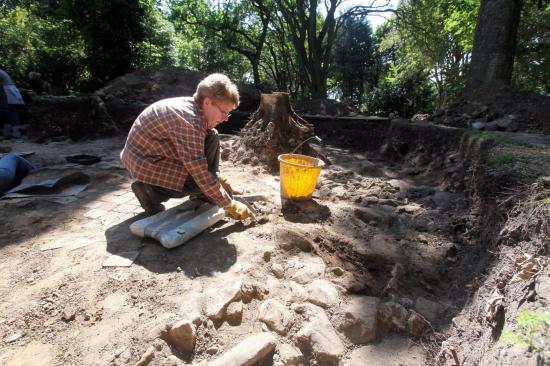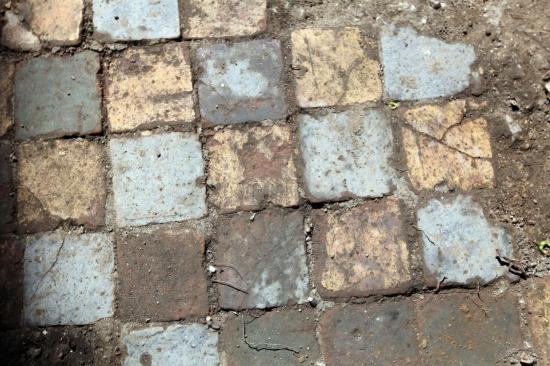Tony Henderson
Source - http://www.thejournal.co.uk/news/north-east-news/three-year-dig-uncovers-medieval-7336199

The final days of a three-year community dig have uncovered firm evidence of a medieval hospital buried beneath a Tyneside park.
The volunteer-staffed archaeology project is part of a restoration project for Northumberland Park on the North Shields-Tynemouth border.
When the park was being laid out in the 1880s, there were reports of workmen finding medieval remains and there are documentary references to a St Leonard’s Hospital on the site from the 13th Century.
The first two seasons of the dig revealed around 40 burials, most of them medieval.

The latest excavations have uncovered another 40 and now – with the dig due to end on Sunday - the first significant evidence of the hospital itself.
This is a floor of glazed, coloured tiles probably dating from the 13th

“It is the remains of a significant, quite posh building which was probably the east chapel of the hospital,” said archaeologist Richard Carlton from The Archaeological Practice, who is leading the dig.
“These are significant structural remains and the first secure remains of the hospital.”
The project holds a medieval craft open day today (Saturday) from 11am-3pm, which will include tile and pottery making, spoon carving, wool spinning and herb display.
It is thought the hospital was in use from around the middle of the 13th although burials are believed to have continued on the site until the 18th
It would have been an important staging post on the road to Tynemouth Priory. The name of St Leonard’s was often given to leper hospitals, and Mr Carlton said that some of the bones from the burials showed signs of leprosy.
The burials are likely to be part of the hospital cemetery and although most are medieval, some have been cut into the tiled floor.
“It looks like burials have continued in the ruins of the chapel,” said Mr Carlton. It is also now thought that the hospital is more extensive than originally believed and there are hopes that the dig can continue next year.
The project has also uncovered a waste pit, containing item such as pottery, animal bones and shell fish remains, giving clues to medieval life in the area.

Mr Carlton said: “We knew there was a hospital somewhere but we did not know if anything had survived, so the structural finds are gratifying and a reward for the efforts of our loyal volunteers.”